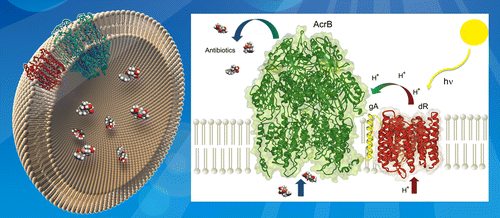Solar-powered nanofilters pump in antibiotics to clean contaminated water

Using the same devious mechanism that enables some bacteria to shrug off powerful antibiotics, scientists have developed solar-powered nanofilters that remove antibiotics from the water in lakes and rivers twice as efficiently as the best existing technology. Their report appears in ACS' journal Nano Letters.
David Wendell and Vikram Kapoor explain that antibiotics from toilets and other sources find their way into lakes and rivers, with traces appearing in 80 percent of waterways. Those antibiotics foster emergence of new antibiotic-resistant bacteria, while harming beneficial microbes in ways that can degrade aquatic environments and food chains. Filters containing activated carbon can remove antibiotics from effluent at municipal sewage treatment plants, before its release into waterways. But activated carbon is far from perfect. So the scientists looked for a better technology.
They describe development and successful laboratory testing of capsule-like "vesicles" containing the very mechanism that enables bacteria to survive doses of antibiotics. This system pumps antibiotics out of bacterial cells before any damage can occur. Wendell and Kapoor turned it around, however, so that the system pumps antibiotics into the vesicles. That way, they can be collected and recycled or shipped for disposal. In addition to the pump, the vesicles contain a propulsion system driven by sunlight. The pump system could be adapted to clean hormones, heavy metals and other undesirable materials from water, the scientists state.
More information: Engineering Bacterial Efflux Pumps for Solar-Powered Bioremediation of Surface Waters, Nano Lett., Article ASAP DOI: 10.1021/nl400691d
Abstract
Antibiotics are difficult to selectively remove from surface waters by present treatment methods. Bacterial efflux pumps have evolved the ability to discriminately expel antibiotics and other noxious agents via proton and ATP driven pathways. Here, we describe light-dependent removal of antibiotics by engineering the bacterial efflux pump AcrB into a proteovesicle system. We have created a chimeric protein with the requisite proton motive force by coupling AcrB to the light-driven proton pump Delta-rhodopsin (dR) via a glycophorin A transmembrane domain. This creates a solar powered protein material capable of selectively capturing antibiotics from bulk solutions. Using environmental water and direct sunlight, our AcrB-dR vesicles removed almost twice as much antibiotic as the treatment standard, activated carbon. Altogether, the AcrB-dR system provides an effective means of extracting antibiotics from surface waters as well as potential antibiotic recovery through vesicle solubilization.
Journal information: Nano Letters
Provided by American Chemical Society




















